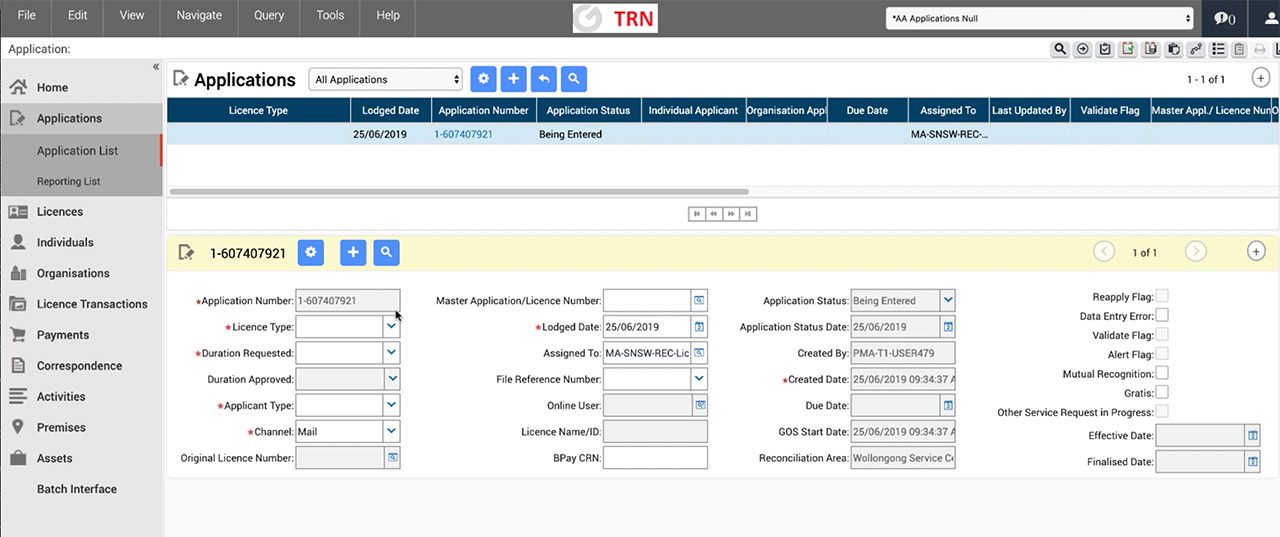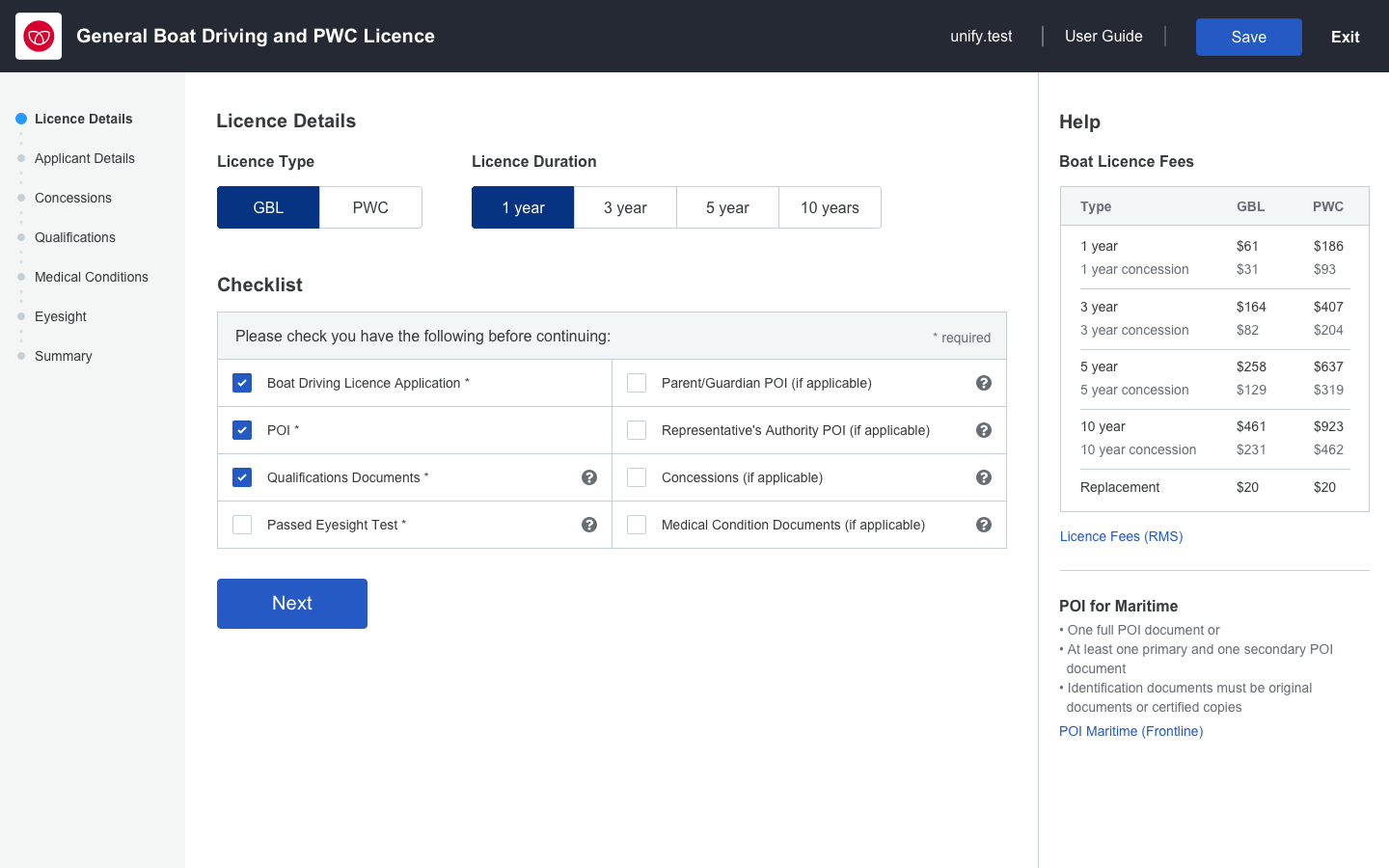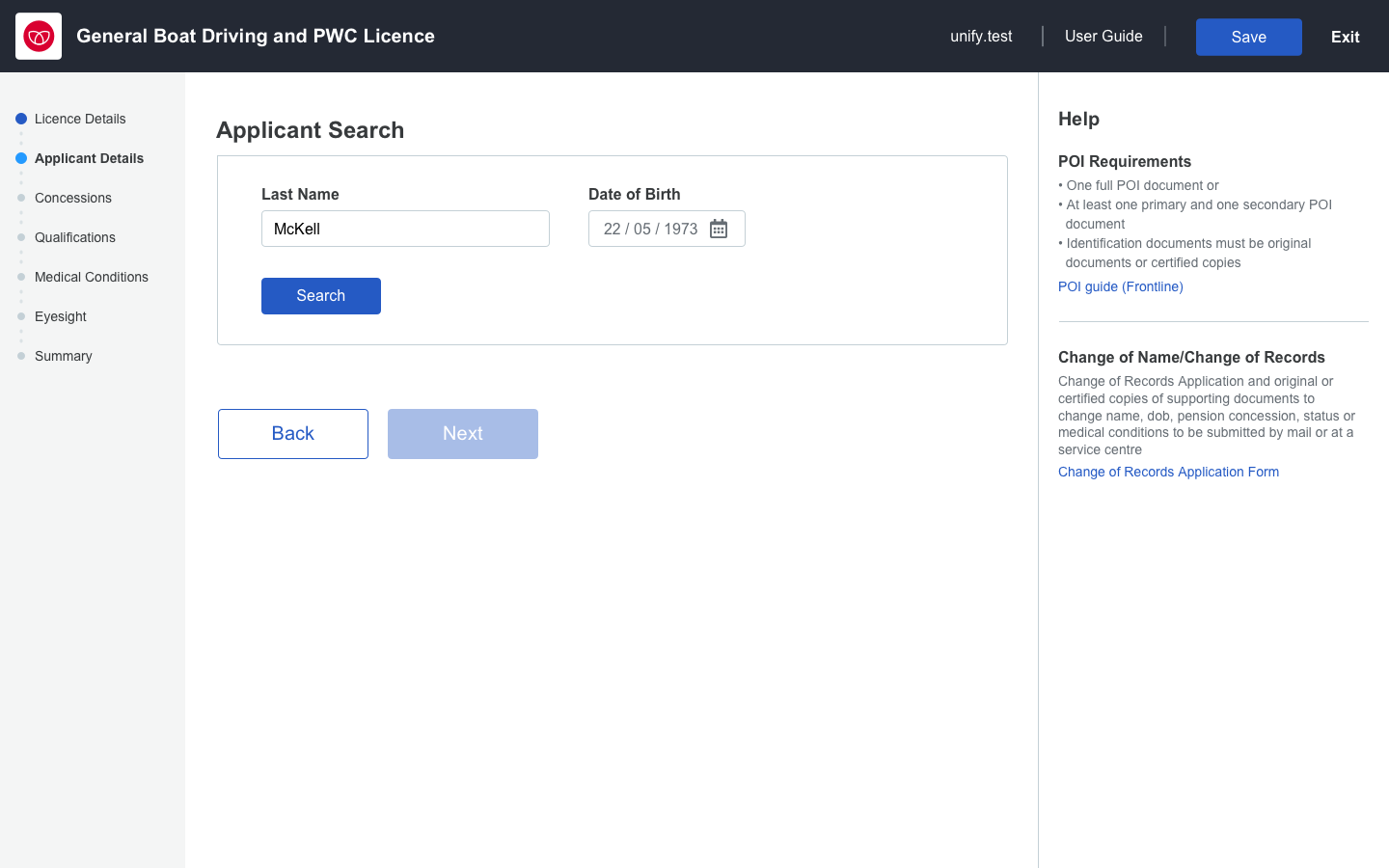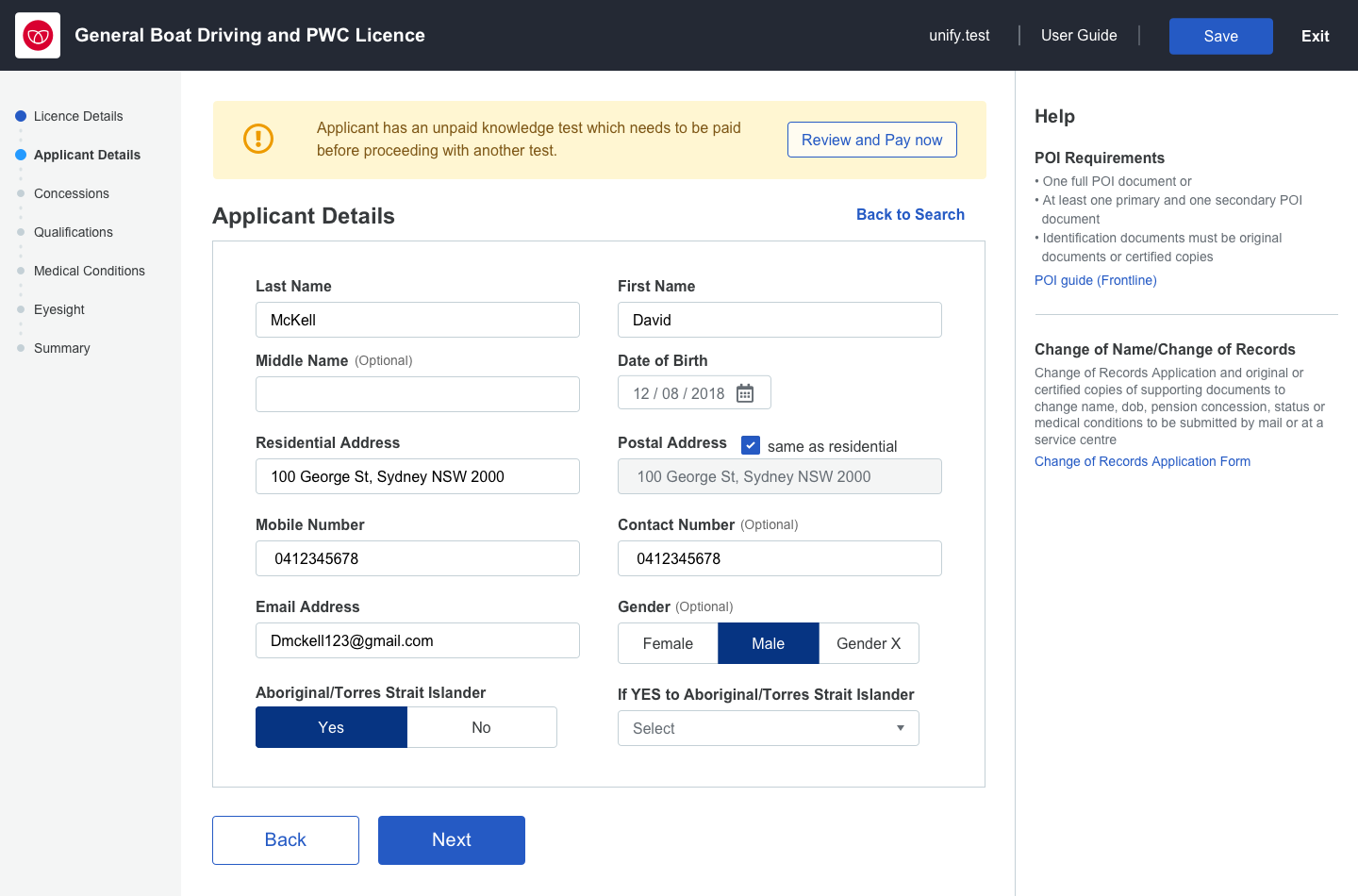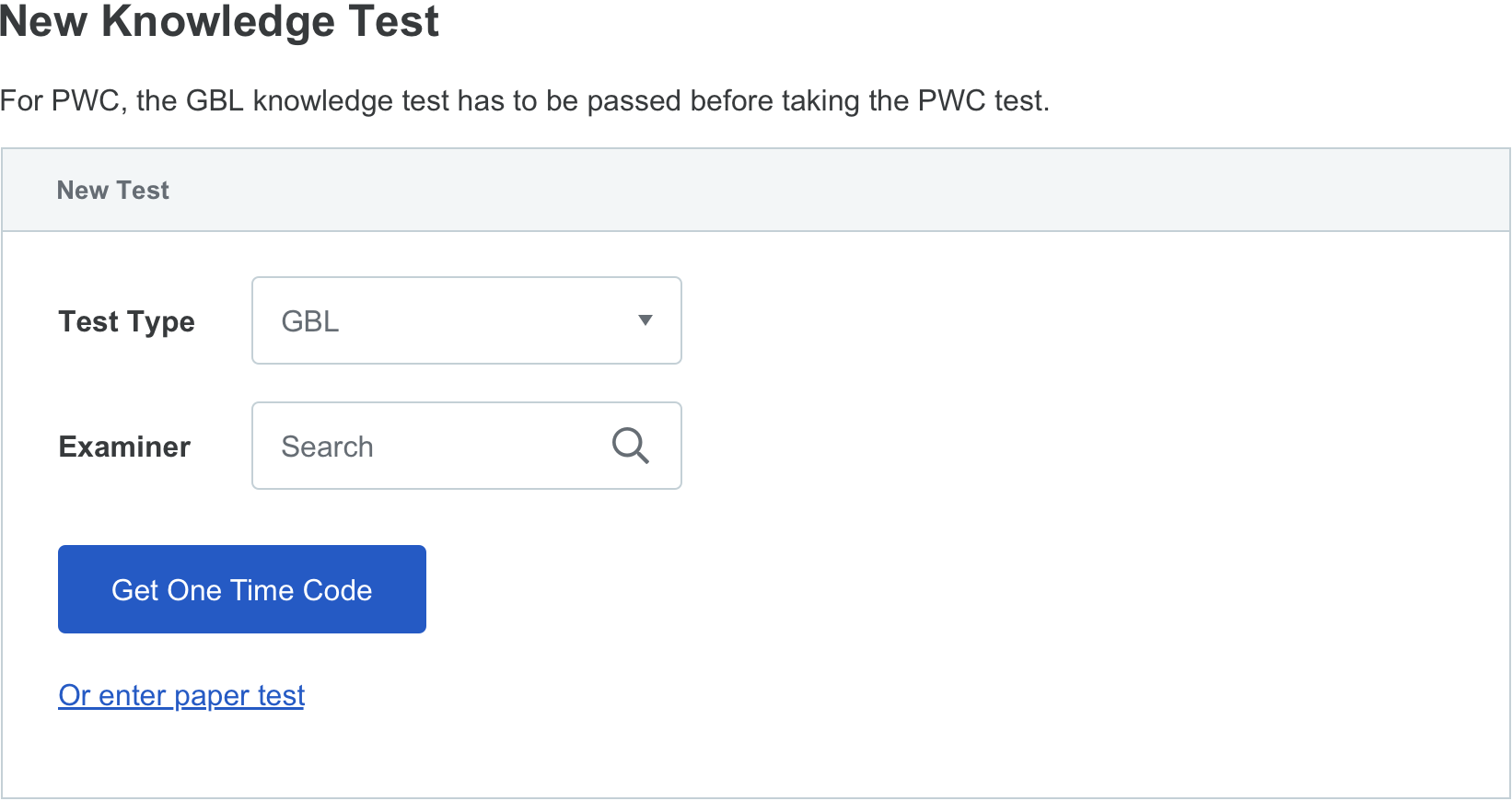
Boat Driving Licence Application Redesign
Agency
Industry
Government
Type
Internal Systems Web App
Role
Principal Product Designer
Project Date
2019
A first major project for the Unify product where the task was to redesign the boat driving licence application to replace the existing legacy system.
PROBLEM STATEMENT
Service Centre staff help customers apply for their Boat Driving Licence by completing an application over the counter in a legacy system Siebel. Only specialised staff can work on this application because it has such a steep learning curve. This situation causes frustration for the staff who are not experts at the system which creates increased processing times and errors, incurring added costs and resourcing needs for the business.
GOALS
- End to end redesign of the application
- Distill ambiguity to streamlined solutions
- New application to be easy and quick to process
- Reduce resourcing and costs for the business
- Happier customers with less wait time and smoother process
What is the Boat Driving Licence (BDL) application?
BACKGROUND
The Boat Driving Licence is like a driver’s licence that you have to apply for in order to operate a boat. The application is processed at the Service Centre when a customer comes in, providing qualifications, filling out a paper form and doing a paper test. The Service Centre processes this application into the legacy system on behalf of another government agency Roads and Maritime, who are the stakeholders with the business rules. There are 2 types of boat licences, one for operating a regular boat and one for a personal watercraft (eg. jetski).
What are the current issues with the system?
Resource/Time intensive
- Requires a lot of training
- Takes a long time to process
Error prone
- Complex business rules
- Users run into errors easily
Inefficient system
- Dated UI/Hard to customise
- Needs 3rd party to maintain
Business needs
Minimise training
Automate business rules
Simplify the process
Reduce processing time
Our Users

Our primary users are the Service Centre staff, where in each centre only a few specialised staff trained in the current BDL application can serve the customer because the system requires so much in-depth knowledge.
User groups for research
- Specialised Staff/SME’s – main focus to understand behaviours, current process and business rules
- All service centre staff – general research, usability testing
- End customer applying for licence – consider needs, observation
- Maritime agency stakeholders – consult to check business rules, get approval
User pain points
“Siebel is very slow… it’s always spinning”
“I can get stuck and can’t go back”
“It’s hard to remember everything”
“I don’t touch Siebel, only the ones trained on the Maritime queue can do the transaction”
“I have to keep clicking on this button non-stop until the file generates so I can download the licence as a word doc and then print it”
“Customers are surprised that they need to bring a photo in, because we have the cameras for the driver licence they think we can take a photo for the boat licence.”
User needs
Faster processing time
Minimal steps
Linear & intuitive process
Simple interface
Clear business rules
Visible feedback & help info
Digitise photo & knowledge test
Automate licence printing
The Current Application
Learning how it works in Siebel
We performed contextual inquiry with 5 participants that were SME’s and a few other general staff, attended the Siebel training provided to staff, had open interviews with the Siebel trainers to go through the current process and application in more detail. We gained access to the system and learned hands-on how to process a boat driving licence on our own using the legacy system. (It was definitely really complicated and hard to learn and retain the procedures, being a tech savvy person myself.)
Jobs to be done
- Apply for the BDL application successfully without having to worry about remembering every business rule, where to click next and not have to apologise to the customer for inefficiencies.
- A Unify application that will seamlessly work with backend api’s connecting to the legacy Siebel system and feeding data to the Maritime agency to issue a licence including the digital licence to show on the Service NSW mobile app.
- Digitise the whole application process to reduce human error and increase automation.
Designing the New Application
Design process
- Synthesised the data through affinity mapping, customer journey and user flow mapping, and created user stories in Jira and shared with our cross-functional team
- Collaborated with engineers for technical requirements
- Design with sketching, wireframing in Sketch and prototyping in Invision. Continually validated with heuristic evaluation and SME’s to see if the designs met the criteria of business rules and usability.
Usability testing
Qualitative, in-person testing with hi-def prototypes and the built application. Testing with SME’s and non-SME’s, all staff from different service centres, 5 participants at a time, and re-iterating after each session. Working closely with engineers as we re-iterated getting closer to the final build. 10+ rounds of testing.
API design
The api’s were determined during the design process aligning with the user flows and wireframes where endpoints would be needed. We had a few rounds of technical discussion with our engineers and the 3rd party agency that managed the current application to design the api specs for the new application.
A/B testing
I had designed 2 form layouts/flows. The simple version followed a step by step form flow with each screen. The complex version involved all the application form fields on one screen. To our surprise, 80% of the users preferred the complex form because they wanted to be able to enter all the fields quickly, check the info on one page without additional clicks.
User-centered design
The A/B testing helped define our design patterns for our users who preferred the one page application form and 2 column forms. This went against common form design principles, but we were designing to respect our user’s needs which were unique to our system since they are doing repetitive tasks on these applications with timed performance, so we made sure the design suited their behaviour.
Evolving the design system
There were quite a few features that came out of the design process which became a part of our design system. The checklist, one page form, and applicant search were some of them. With the one page form, the fields would appear sequentially as they were filled out.
Stakeholder approval
We stayed in communication with the Maritime agency throughout the design process and got their sign off with the design where we had ongoing discussions to ensure we covered all their complex business rules.
Delivery
Getting it live
We did a lot of testing to make sure everything was working the way it should as there were many technical and business requirements to meet. We needed to make sure all the api’s were connecting and the agency database was receiving our data properly. As this is a government transaction, the live application needs to have real customer data, so we didn’t know whether it was working 100% until we had someone apply for a real licence at a service centre.
Test Cases
I wrote the test cases as there were many use case scenarios with all the various ways of qualifying for the boat licence. We had a tester go through all the testing and then went through UAT testing with the business before being able to go live.
Service Centre Pilot
I assisted with the initial launch at the Miranda Service Centre. It took a few tries to get a successful application, because of back-end errors which engineers were able to troubleshoot and fix. We then released the transaction to all the service centres in Sydney and then the rest of the state.
Feedback & Metrics
We had very positive feedback on the application that it was easy to use. The staff got through the application on their own easily without much explanation. The average completion time from went from 10 minutes to 5 minutes.
Quick tutorial
I created a video tutorial of the application ith a quick walkthrough of the happy path and posted on Workplace to educate all the staff about the redesigned application. We also created a user guide document which could be referenced easily by the staff.
Continuous Improvement
Digital Knowledge Test (2021)
The paper test was finally replaced by the digital knowledge test. We interviewed staff to learn more in-depth on how the testing process worked, and then designed the updated process into the prototype. We worked with a third party to implement the test results to be retrieved by the application, so the staff no longer have to mark the test and enter the results manually.
Digital Photo (2022)
I added the photo capture component to be implemented into the application, so the staff can use the cameras in the service centre to take the customer’s photo, instead of the customer having to bring in their own photo which has to be glued and mailed to the back office for processing. We are still waiting for budget/approval to go ahead and build this.
Summary
Our users say they “love it!”
Despite the main challenges of pinning down the vague business rules through many rounds of research and testing, we successfully delivered an elegant solution and now provide continuous support for it. It was well received by all the Service Centre staff, the business and Maritime agency with the metrics we achieved by halving the original processing time and allowing any staff to be able to use it without additional training.




